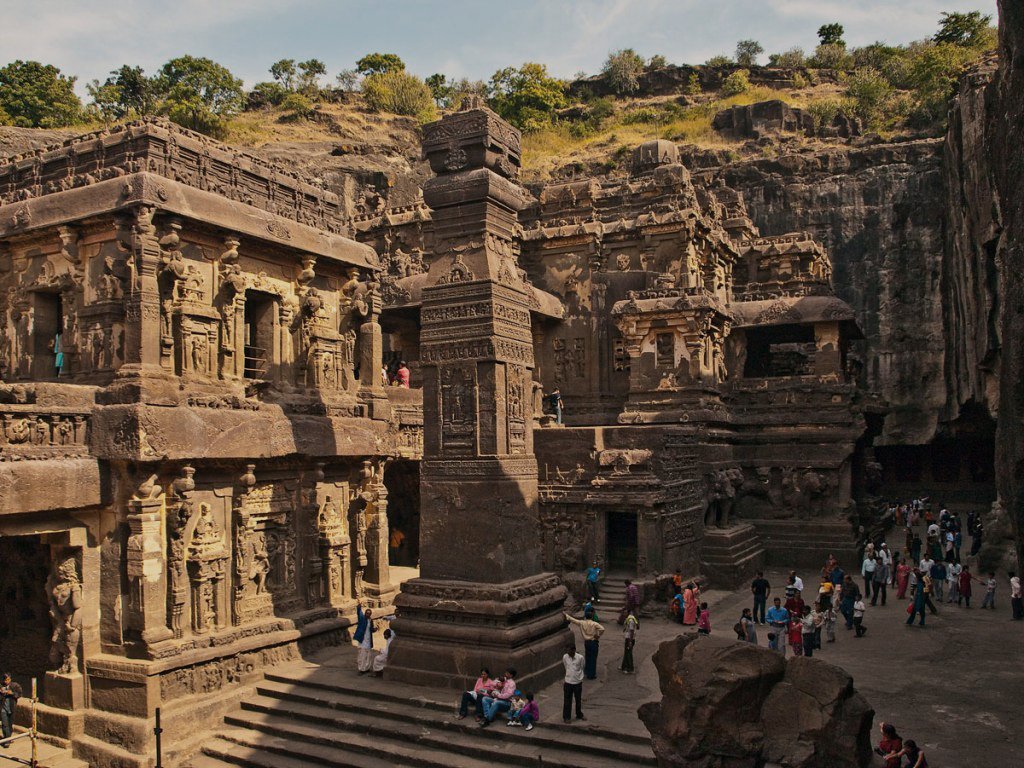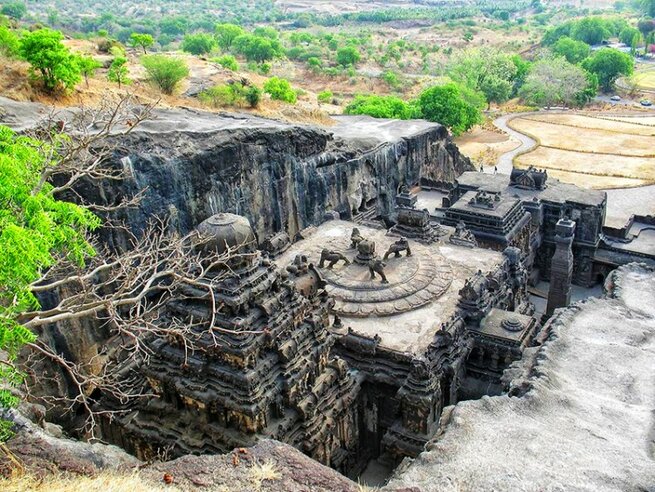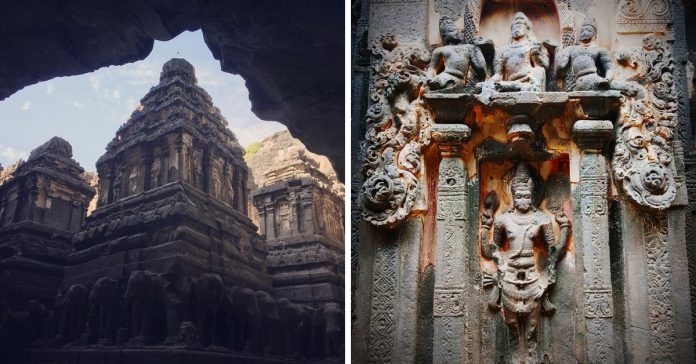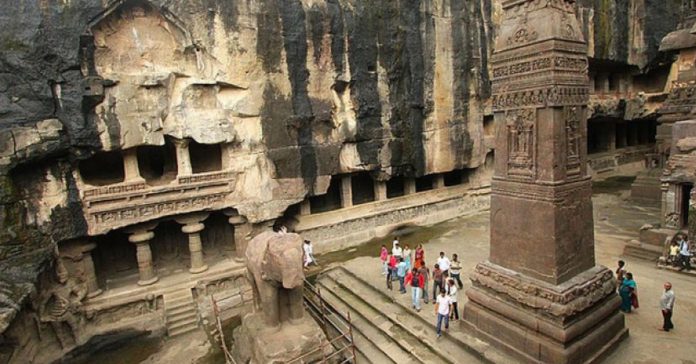
An interesting establishment that took 18 years to complete. Kailash Temple is one of a kind as King Aurangzeb failed to demolish it. Right now it is a much-anticipated tourists attractions in India.
Kailash Temple or Kailasa Temple in Ellora Caves, Aurangabad, Maharashtra is a great attraction for tourists from the world over. Built by the Rastrakuta dynasty’s King Krishna 1 in 760 AD, the temple is mysterious in several ways.
A megalith carved out of a single rock. It is considered one of the largest single monolithic excavations in the world and among the most remarkable cave temples in India. Apart from its impressive size, the temple is also remarkable for its sculptures. As well as for the fine workmanship of its other architectural elements.
As part of the UNESCO heritage site of Ellora. The Kailasha temple is listed simply as Cave no 16, out of the 34 caves-temples excavated on slopes of the Deccan plateau, facing the Arabian Sea. The nearest airport is Aurangabad. Also, of interest, about 170 km from here, is the 50000-year-old, Lonar Crater Lake, created by a meteoric impact.
Here are few facts that you should know before visiting this magnificent temple
Carved from a Single Rock
As eccentric and unbelievable as it sounds. Kailash Temple was built by carving a giant single rock. It took 18 years to complete the sanctuary in a few places. In a few books, it says that it took 7000 labors and 150 years to complete this wonder. The Great Kailasa is a freestanding, multi-storied temple complex dedicated to Lord Shiva. The specialty of this 1300-year’s old architectural marvel is that it is carved out of a single volcanic basaltic rock of the Charanandri hills. It is considered the largest monolithic piece of art in India in and the world. Even the sculptures at this enigmatic temple are carved from the same piece of rock as the rest of the temple. The temple architecture shows traces of Pallava and Chalukya styles.
Another fun fact is with its discovery the art of carving laid back to hundreds of years. It is probably the first skill human can ever learn. Legend has it that nearly 200,000 tonnes of rock were removed to construct this monolithic structure.

Link to Spiritual world
In addition to its magnificent architectural features, the complex also has cosmological aspects. The architectural design of the temple complex is viewed by some scholars as a journey from the material to the spiritual. From the earthly to the celestial, and from matter to mind.
The Gopuram, or entrance gate, serves as the main point of entry. It symbolizes the passage from the human world to the sacred. As one moves from one mandapa to the next, the size, volume, and space of the hall get smaller and the light gets dimmer. Which signifies that there are fewer distractions and one is getting closer to the sacred world.
Also See: Salar de Uyuni: The place where earth meets heaven
The physical act of ascending the stairs leading to the main shrine is said to denote the ascent to heaven symbolically. And the tall, pointed sikhara serves as a substitute for the heavenly sphere.
Kailash Temple is Impossible to destroy
There is an interesting tale about the Kailasa Temple of Ellora. Mughal King Aurangzeb who destroyed thousands of Hindu temples also tried to destroy the Kailasa temple. It is said that 1000 people were sent to destroy the temple in the year 1682. They worked for 3 years but they could break and disfigure a few statues only. Aurangzeb finally gave up on this task and realizing that it was impossible to destroy the temple as the rock was simply too hard to demolish. Even though artisans used only hammers, chisels, and picks, to construct it.

The way sound moves and vibrates among the walls and pillars of the temples is an indication that the place has divine blessings from Indian sages. Every aspect of the temple represents the sacredness of Hindu culture. The symbols depicts the pious intentions behind the construction.
Kailash Temple also featured in Netflix movie “Ray”.

